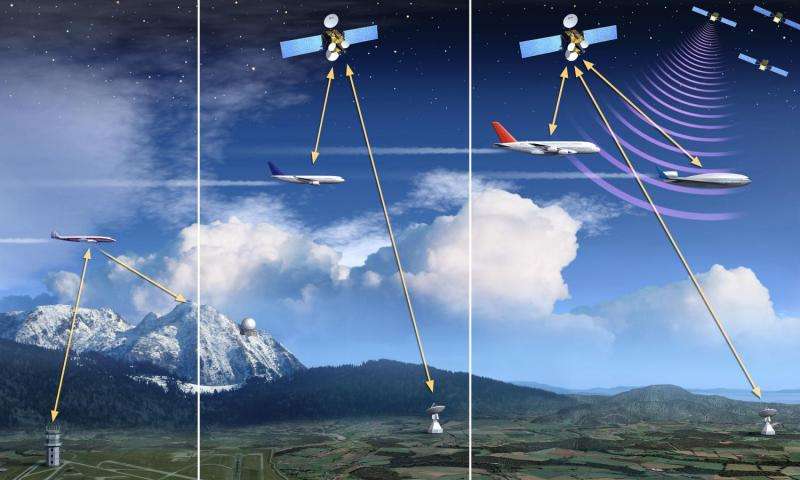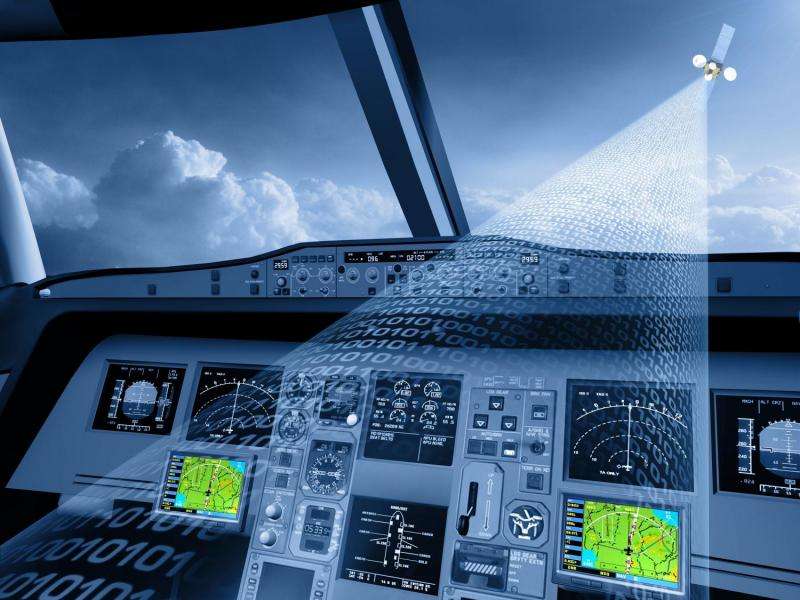Video: Modernising air traffic management with satellite systems

ESA and UK satellite operator Inmarsat are forging ahead with the development of air–ground communications via satellite as part of Europe's plan to keep our skies safe as air traffic increases.
A new partnership between ESA and Inmarsat secures the modernisation of Air Traffic Management (ATM) and will build on developments already under way in Europe.
This Iris Service Evolution will identify the technical, commercial and operational requirements of the satcoms part of the Single European Sky ATM Research programme, which promises to boost efficiency, capacity and performance of air traffic management worldwide.
An initial set of satcom services was designed and developed under the Iris Precursor contract that ESA awarded to Inmarsat in November 2014.
These services are meeting the aviation industry's short-to-medium term needs supported by Inmarsat's next-generation SwiftBroadband Safety satcom system. They complement existing but congested terrestrial datalink services.
By 2018, Iris Precursor is expected to open the door to initial 4D flight path control that pinpoints an aircraft in four dimensions to allow the precise tracking of flights, with the exchange of information coming directly from onboard systems.
On 23 February Iris Precursor operated a first test flight between Toulouse and the Balearic Islands passing above Madrid, performing initial 4D flight path control and controller–pilot data link exchanges with Maastricht Upper Area Control Centre.
Building on this technology and €40 million of previous efforts, Iris Service Evolution is the first milestone towards the provision of the full Iris services.
Ultimately, Iris will evolve to support 'Full 4D' using highly secure multiple links enabling more efficient management of traffic by synchronising routes between air and ground.
Efficient datalink services allow flight plans that can be continuously updated to maintain the best path to the destination. As a result, air traffic control can offer better routings, sequence aircraft far in advance, and maximise airport and airspace capacity.
In addition to reducing flight times and airborne holding, it will also support continuous descent, reducing fuel consumption, delays and carbon dioxide emissions.

The evolution involves a consortium of over 30 companies, including Airbus, Boeing, NATS and Thales Alenia Space, together with the Iris programme's first airline partner, Alitalia, the national carrier of Italy.
These companies include air navigation service providers and offer expertise in air transport, aeronautics and space, aircraft manufacturing, and air traffic management.
Leo Mondale, President at Inmarsat Aviation, said: "Air traffic management is under great pressure and there is no doubt that the digitalisation of cockpit communication is a vital building block of the future.
"Iris will help to shape the future of ATM and mark a new era of communications in the aviation industry."
Giancarlo Schisano, Chief Operations Officer at Alitalia, said: "We are very proud of being the only airline that is a partner in the Iris consortium. We will make our knowhow available for this key project, which will revolutionise the aviation industry.
"We believe that satellite communications represent the natural development of the industry and will lead to concrete benefits to airlines and their travellers due to reduced flight times, more savings on fuel consumption and even more advanced flight safety."
Magali Vaissiere, ESA's Director of Telecommunications and Integrated Applications, commented: "Iris brings safer air traffic management to airlines and their passengers.
"It is an outstanding example of how cooperation between commercial partners and institutions can create effective technical solutions that improve our everyday lives and make European companies more competitive on the world markets".
The ESA–Inmarsat collaboration for Iris was created following a major funding commitment approved at ESA's 2012 Council at Ministerial Level in Italy. While the programme initially focuses on Europe, the services will also benefit air traffic management in North America, Asia Pacific and other regions around the world where the growth of air traffic is placing a strain on ground-based networks.
Provided by European Space Agency



















